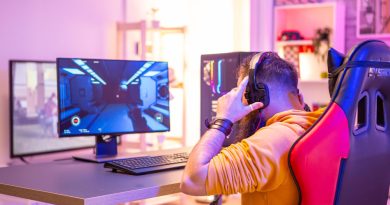Rapid Prototyping in Design & Development process 2020
Rapid Prototyping, otherwise known as “Rapid Prototyping” is a method of designing, creating and testing prototypes using computer aided design software or hardware. It may involve designing and creating the actual physical object from a series of digital representations, such as by making the actual object or product visible in a computer monitor or other visual display. Some rapid prototyping methods, especially those that use computer-aided design software, use a computer program, known as a CAD or computer-aided design software, to generate digital models that can then be transferred into physical forms.
Table of Contents
What is rapid prototyping in instructional design?
Rapid Prototyping in Design & Development is a method of design, creation and testing prototype devices using computer-aided design software. This type of rapid prototyping was originally used to develop a concept for a new company or for the creation of a prototype product. Today it is also used to create prototypes for medical devices and surgical equipment. In some cases, this type of rapid prototyping may also be used to create software programs or software systems that require the use of electronic chips to function.
When a new computer program is designed to be used in medical equipment or software applications, it is usually designed to have a minimal number of parts and components that are interchangeable and easy to assemble. The result is a streamlined, easy-to-use system that does not take time to develop. In most cases, a successful quick-and-dirty system can be ready within a day or two.
Once the prototype is designed, it is sent to an outside manufacturing source where it will be assembled. While a manufacturer assembles it they make modifications to the design to ensure its quality, compatibility and performance. The end result is a completed product. The manufacturing company may also work with the client to test the finished product and to fine tune the design and quality of the final product.
Design Better And Faster With Rapid Prototyping
This type of rapid prototyping in Design & Development is commonly used in the design and development of products that must be mass produced. The goal of this method is to reduce costs by building thousands of units at one time, reducing costs to the manufacturer and allowing the end users to obtain these products quickly.
In some cases a manufacturer will build prototypes as part of the production process and then allow them to be distributed as a pre-production model. Although they can be used as prototypes, many manufacturers prefer to build production-ready prototypes. In some cases, rapid prototyping in Design & Development also uses both in designing and in the production process.
Rapid Prototyping in Design & Development (RPD) is a technology that has been used to create various types of digital models over the years. These digital models include three-dimensional (3D) designs of objects or products. Other models of digital models include digital representations of products in a physical form such as electronic circuits.
Computer programs that are used for rapid prototyping can be used to create a wide range of objects including software applications, 3-dimensional graphics, electronic circuit diagrams, physical designs, and computer programs. Rapid prototyping may also be used to produce a number of different object and/or product types at the same time. This type of rapid prototyping is used for a variety of purposes, including testing, designing, developing, creating, and improving hardware products and other software applications.
How Rapid prototyping helps you Design and Development
Rapid prototyping in Design & Development can be done using software that can be programmed into computer programs or directly into a computer by using a USB device. Some software programs allow the user to program and save designs on the software itself and some allow for direct programming of designs to be made directly on the software itself. Many computer programs are available which are designed for quick prototype creation and are used in conjunction with other computer programs such as software that is used to create computer-generated images or graphics, which are usually used for visual demonstrations.
Prototype production and distribution of prototypes are an important part of this method of manufacturing. Production of prototypes involves both the manufacturing of a large quantity of them and the actual assembly and distribution of those prototypes. The manufacturing process generally involves taking a group of computer-generated images of an object or a series of objects and combining those images into a single image.
Assembly and distribution of these products are done through many different distribution centers. This distribution is usually done by a third party that will take care of delivery, packaging and distribution for you




